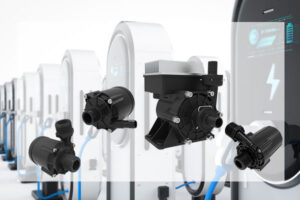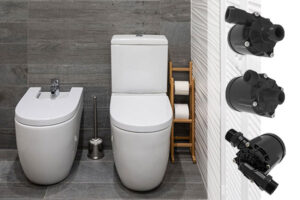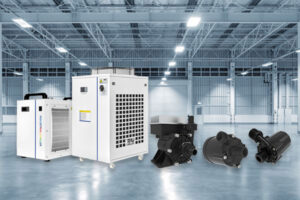Brushless DC motors (BLDC motors) are revolutionizing the way we use electric motors. But what makes them stand out from traditional brushed DC motors?
Brushless DC motors operate with direct current (DC) electricity without the need for brushes or a commutator. By using electronic controllers to manage current switching, they are more efficient and require less maintenance.
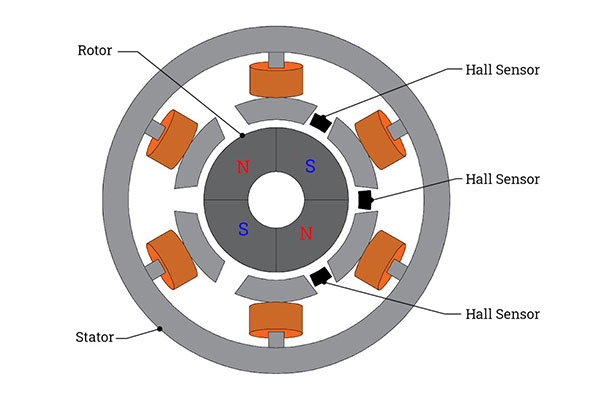
In this article, we'll dive deeper into the construction[^1], working principles1, and the many benefits that make brushless DC motors so appealing for a wide range of applications.
Construction and Working Principle of Brushless DC Motors
Have you ever wondered how a brushless motor works? It’s fascinating how such a simple design can deliver outstanding performance.
A brushless DC motor features a rotor with permanent magnets and a stator with windings. The rotor spins as the magnetic field interacts with the stator, driven by electronic commutation.
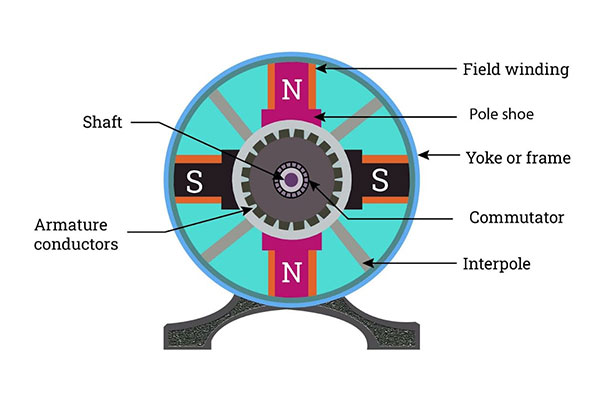
The basic components of a brushless DC motor include the rotor, stator, and controller. But how do they actually work together to create motion? Let's break this down.
Rotor vs Stator
The rotor is the rotating part of the motor, and it's typically made of permanent magnets. The stator, on the other hand, is the stationary part, containing coils of wire through which current flows. When an electric current flows through the stator windings, it generates a magnetic field that interacts with the permanent magnets of the rotor. This interaction causes the rotor to rotate.
Table: Rotor vs Stator Comparison
| Component | Function | Material | Role in Operation |
|---|---|---|---|
| Rotor | Rotates | Permanent magnets | Creates the magnetic field that interacts with the stator |
| Stator | Stationary | Copper windings | Produces the magnetic field that drives the rotor |
Commutation Mechanism
Unlike traditional brushed motors, BLDC motors don't have brushes to switch the current. Instead, they rely on an electronic controller to switch the current in the stator coils, ensuring that the rotor keeps spinning. This process is known as electronic commutation2. The controller constantly adjusts the timing of the current flow to match the rotor's position, ensuring smooth and continuous rotation.
Efficiency and Heat Management
BLDC motors are known for their high efficiency3, primarily due to the absence of brushes. The lack of friction results in less energy loss, which translates into more efficient operation. However, managing heat is still a concern. High efficiency helps reduce heat buildup, but it's important to consider the motor's operating environment. Effective heat dissipation4 is vital to ensure the longevity of the motor.
Advantages of Brushless DC Motors
Brushless DC motors are not just more efficient; they bring a range of benefits that make them essential in modern applications.
With no brushes, BLDC motors offer advantages such as longer operational life, quieter operation, and better efficiency. They can also reach higher speeds than brushed motors.
Let's take a deeper look at the specific benefits of BLDC motors. These advantages go beyond just technical specifications—they shape the practical applications of these motors in a wide range of industries.
Longer Operational Life
Without brushes, there is less wear and tear on the motor. This leads to a significantly longer operational life. Brushed motors wear out over time as the brushes make physical contact with the commutator, leading to friction and eventual degradation. BLDC motors, on the other hand, operate without this friction, reducing maintenance needs and extending the lifespan of the motor. This makes them ideal for industries where equipment reliability is paramount.
Table: Lifespan Comparison Between Brushed and Brushless Motors
| Motor Type | Lifespan (horas) | Maintenance Requirements |
|---|---|---|
| Brushed DC Motor | 500 - 2000 | High (Brush replacement) |
| Brushless DC Motor | 10,000 - 20,000 | Low (No brush replacement) |
Quieter Operation
Another key benefit of BLDC motors is their quiet operation. Traditional brushed motors produce noise due to the friction between the brushes and the commutator. Since BLDC motors lack these components, they run much quieter. This makes them a preferred choice for applications where noise levels need to be kept to a minimum, such as dispositivos médicos 5, home appliances, or computer cooling fans6.
Better Efficiency
Efficiency is one of the most significant benefits of BLDC motors. With no brushes, energy is transferred directly into motion with minimal energy loss. The electronic controller optimizes the power delivery, ensuring that the motor operates at peak efficiency across different speeds. Como resultado, BLDC motors are far more energy-efficient than their brushed counterparts, especially in high-performance or continuous-use applications.
Applications of Brushless DC Motors
From medical devices to automotive systems, BLDC motors are used in countless applications. But what makes them so versatile?
Due to their efficiency and reliability, BLDC motors are found in printers, automotive components, and medical devices. They are used in a range of industries for both high-performance and everyday applications.
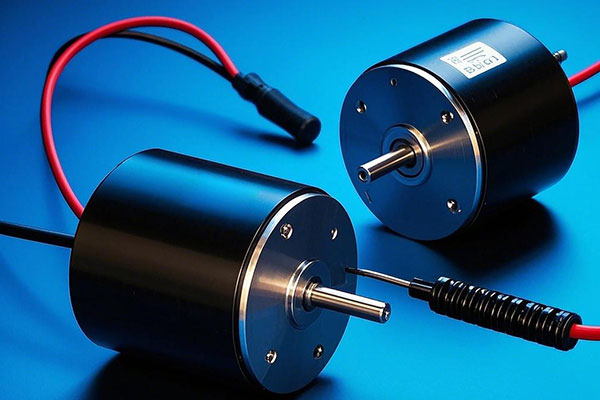
Brushless DC motors are used in many fields, from high-tech industries to everyday appliances. Let's break down some of the most common applications and why BLDC motors are a top choice for these industries.
Automotive Industry
BLDC motors are crucial in modern automotive systems. They are used in applications such as electric windows, windshield wipers, and air conditioning systems. One key benefit in automotive applications is their compact size, making them ideal for space-constrained environments. Additionally, their high efficiency helps reduce the overall energy consumption of electric vehicles (EVs), contributing to extended battery life.
Table: BLDC Motor Applications in Automotive Industry
| Component | Function | Motor Benefits |
|---|---|---|
| Power windows | Window operation | Compact, eficiente |
| Wipers | Windshield cleaning | Low noise, long lifespan |
| Air conditioning | Cooling systems | Reduced energy consumption |
Medical Devices
BLDC motors are also widely used in medical devices, including ventilators, surgical robots, and imaging equipment. These motors offer precision and reliability, both of which are critical in medical applications. Their ability to operate quietly ensures that sensitive environments, such as operating rooms, remain undisturbed.
Consumer Electronics
Many consumer electronics, including cooling fans, hair dryers, and printers, use BLDC motors. Their efficiency and quiet operation make them ideal for appliances that are used frequently and need to operate for long periods. The compact design allows them to fit into devices with limited space, making them indispensable in the consumer electronics industry.
2-Phase Brushless DC Motors
If you’re looking for efficiency in smaller devices, 2-phase brushless DC motors are an excellent option. But how do they compare to other types of BLDC motors?
2-phase brushless DC motors are known for their high efficiency, longevity, and quieter operation. They are commonly used in automotive, medical, and home appliance applications.
When considering different types of BLDC motors, it's essential to understand the differences between 2-phase and 3-phase motors. 2-phase motors have unique benefits and drawbacks that make them suitable for certain applications.
Simplicity and Cost-Effectiveness
2-phase brushless motors are simpler than their 3-phase counterparts. They require fewer components and are therefore more cost-effective. This makes them ideal for low-cost applications where space and budget constraints are significant considerations. Their simpler design also means that they can be lighter and more compact.
Efficiency and Torque Output
While 2-phase motors are efficient, they cannot match the torque and power output of 3-phase motors. The 2-phase system generates less torque per unit of current, making them less suitable for applications requiring high performance or high power output.
Applications for 2-Phase Motors
Despite their lower torque output, 2-phase motors are widely used in applications where space, weight, and cost are crucial. Common applications include fans, low-cost medical equipment, and small appliances.
3-Phase Brushless DC Motors
What if you need more power and smoother operation? That’s where 3-phase brushless DC motors come in. Let’s explore why they are better for certain applications.
3-phase brushless DC motors provide higher efficiency, smoother operation, and better performance at higher speeds. They are widely used in industrial automation and automotive applications.
3-phase brushless DC motors are more complex than 2-phase motors but offer numerous advantages. Let’s explore their structure and the unique benefits they provide.
Higher Torque and Power Output
3-phase motors deliver significantly more torque and power than 2-phase motors. The three-phase system enables smoother operation by providing a continuous power flow. This makes them ideal for high-performance applications such as robotics, industrial automation, and electric vehicles.
Smooth Operation at High Speeds
Another advantage of 3-phase motors is their ability to operate smoothly at high speeds. The continuous power supply reduces cogging (the jerky movement associated with some motors) and ensures efficient operation even at higher speeds. This makes 3-phase motors ideal for applications that require constant speed and high precision.
Table: 2-Phase vs 3-Phase Motor Comparison
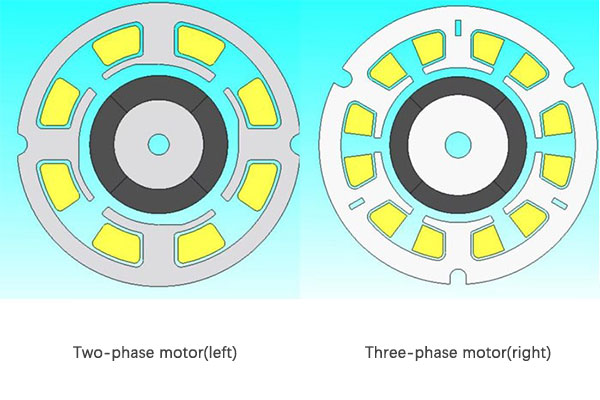
| Feature | 2-Phase Motor | 3-Phase Motor |
|---|---|---|
| Eficiencia | Moderate | High |
| Torque Output | Lower | Higher |
| Smoothness at High Speed | Lower | Higher |
| Power Output | Moderate | High |
| Application Areas | Low-cost, compact | High-performance |
Conclusion
Brushless DC motors offer significant benefits over traditional brushed motors, including higher efficiency, Vida más larga, and quieter operation. Choosing between 2-phase and 3-phase motors depends on your specific needs and application requirements.
[1]: Learn about the components that make up a brushless DC motor and how they differ from traditional motors.
-
Understand how brushless DC motors work and why they offer superior efficiency compared to brushed motors. ↩
-
Learn how electronic commutation works and replaces the traditional brushes in BLDC motors. ↩
-
Understand the reasons behind the superior efficiency of BLDC motors compared to brushed motors. ↩
-
Explore methods for managing heat in BLDC motors to improve their performance and lifespan. ↩
-
Understand why BLDC motors are preferred in medical devices due to their quiet operation and reliability. ↩
-
Learn how BLDC motors enhance the performance and noise reduction in computer cooling systems. ↩

